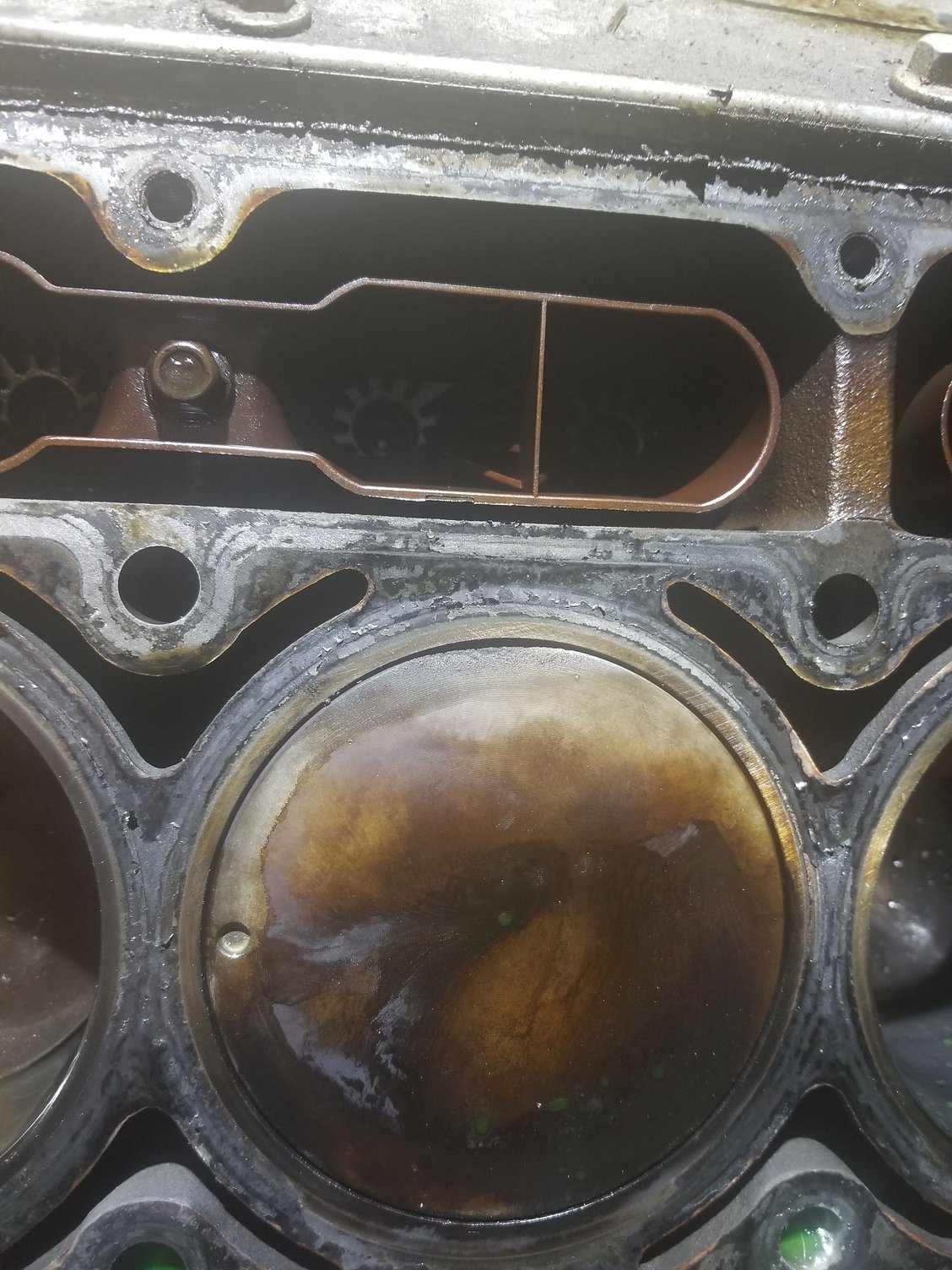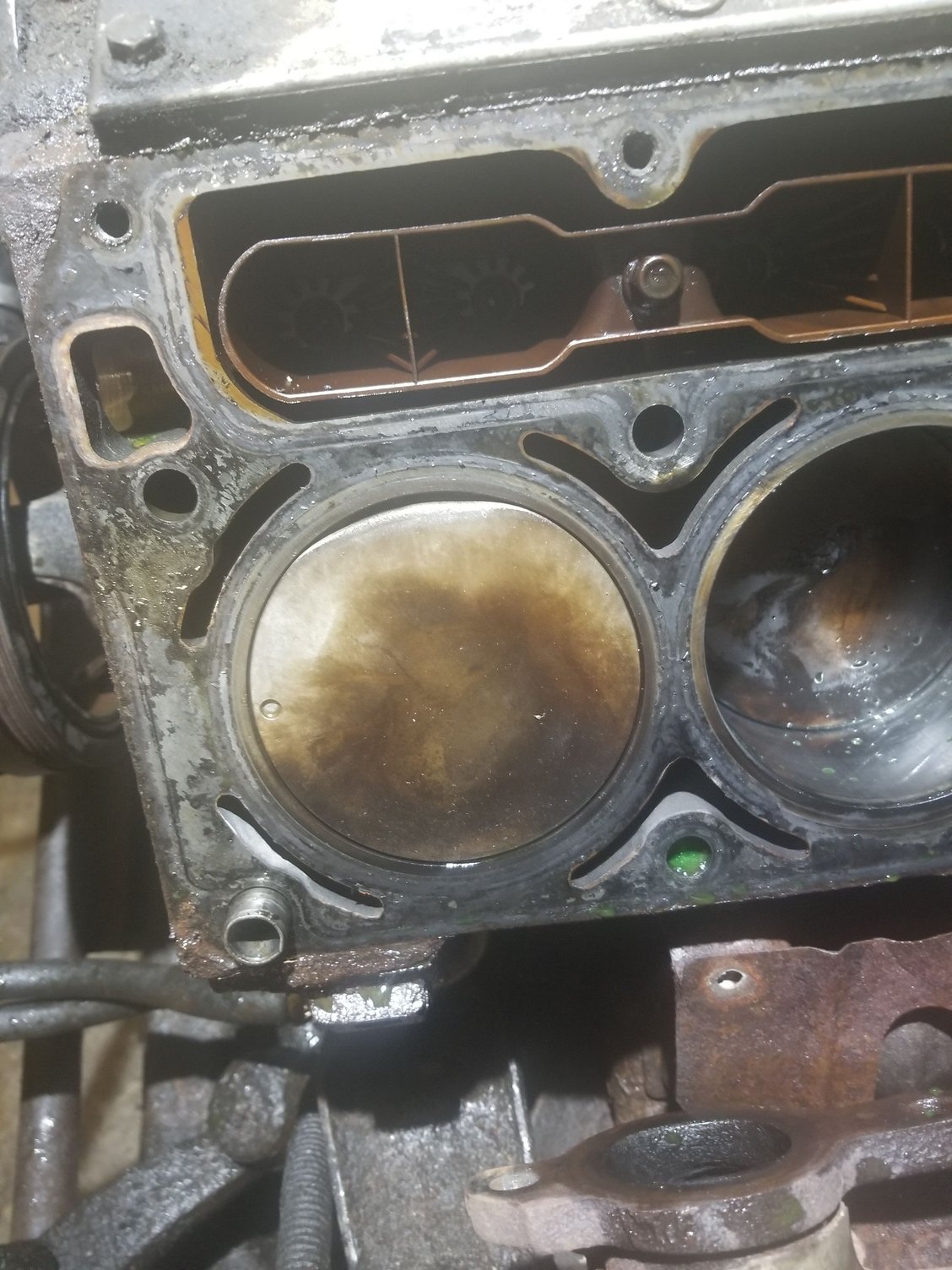strange piston failure?
#1


#2
Not strange at all, Looks like it got to hot, Edges will melt because they are the thinnest.
I don't see any pitting so it may not have been a detonation problem but rather a lean problem. I'm sure someone with more knowledge will chime in.
I don't see any pitting so it may not have been a detonation problem but rather a lean problem. I'm sure someone with more knowledge will chime in.
#3
I absolutely agree with your assessment. One thing I learned in my years of modifying cars especially when it comes to forced induction is always go safe. A lot of guys tune for max power. Then issues like this happen and it shortens your engines life span. Or if you have any issues out of the norm **** goes boom. I hear a lot of guys say that if they get a knock count of 1 that's acceptable. Well I tune for 0. Same for fuel once I find max power I richer it up just a tad. From my experience the total loss in hp is marginal and using a seat dyno not even noticeable. The cars run so much safer they tend to last quite a bit longer. If you are competing consistently for money and are compatible go all out. If this is your fun car that you want to run for a while go safe and save tons of money and let it last. My SRT4 after it's rebuild was making 600+ on a 4 cylinder for 100k miles until I totaled it. The motor never had an issue. Ran as good as the day it was first installed to the end.
#5
Did you look at your plugs often, very difficult to melt pistons without seeing signs on the plugs or loosing a few plugs prior to this, curious if you were doing 1/4 mile passes or longer highway pulls?
The tune for Thermal Dynamics changes with heat soak and staying in the throttle longer, extra fuel in needed to remove heat from the cylinder.
How hard are you pushing your fuel system?
Just some thoughts, could be much worse so learn, rebuild and feed that motor boost again! with more FUEL
The tune for Thermal Dynamics changes with heat soak and staying in the throttle longer, extra fuel in needed to remove heat from the cylinder.
How hard are you pushing your fuel system?
Just some thoughts, could be much worse so learn, rebuild and feed that motor boost again! with more FUEL
Trending Topics
#9
I had just put the plugs in before the pull and the old ones looked great. just thought it was time. fuel pressure is 58 psi after when I checked it but I'm during the pull. afr was 11.5 and went to a 10.6 full boost. didn't see any lean spots at all but I keep killing these things so I'm doing something wrong. I've put 2 widebands in it between engine and still break lands and apparently detonate now
#10
Post pictures of your plugs, data log and tune. Have you verified fuel pressure through the whole pull? Just because you have 58 psi at idle doesn't mean it's 58psi with 15psi and 5500 rpm.
Last edited by sbcgenII; 08-28-2017 at 08:52 AM.
#12
I don't have my laptop on me for the tune and have no log because it shutdown in the staging line. I don't have a fuel pressure gauge in the truck so I have no way to know what it was doing it ramps down to 15 degrees. I can take pictures of the plugs. 3 of them are missing the porsalin around the electrode on the plugs
#13
the temp of the engine decides whether the fuel you are using is going to cause trouble (explode problematically when it does). For example if you inject 93 octane gasoline into a 2000*F cylinder it may explode immediately. If you inject into a 1500*F cylinder it might explode while the piston is compressing your mixture as the 9:1 or 10:1 puts temp into it. If the temp is low enough to make it to ignition it can still be so hot that it explodes violently when the spark occurs.
This is why many 93 octane + boost users tend to favor methanol/water injection (for combustion/egt temp reduction) since 93 puts out a lot of heat and that heat goes against the fuel's volatility (makes it more likely to cause problems).
As for timing, once the engine is cool enough, you will want to pull timing out until EGT rises dramatically. You can see it on the dyno as a massive drop in torque. Raise/add timing slightly from this point while the engine is hot (but not over-heated), and that is the safest timing number you could use for the given fuel. Some call it "staying near the timing point of diminishing returns". What you are doing is finding the best mean torque over the duration (finding a reasonable Brake Mean Effective Pressure) with the lowest peak pressure that still drives out exhaust gas cool enough.
Also remember oil is an effective coolant. Make sure you control the oil temps to around 212-220*F
This is why many 93 octane + boost users tend to favor methanol/water injection (for combustion/egt temp reduction) since 93 puts out a lot of heat and that heat goes against the fuel's volatility (makes it more likely to cause problems).
As for timing, once the engine is cool enough, you will want to pull timing out until EGT rises dramatically. You can see it on the dyno as a massive drop in torque. Raise/add timing slightly from this point while the engine is hot (but not over-heated), and that is the safest timing number you could use for the given fuel. Some call it "staying near the timing point of diminishing returns". What you are doing is finding the best mean torque over the duration (finding a reasonable Brake Mean Effective Pressure) with the lowest peak pressure that still drives out exhaust gas cool enough.
Also remember oil is an effective coolant. Make sure you control the oil temps to around 212-220*F
#14
the temp of the engine decides whether the fuel you are using is going to cause trouble (explode problematically when it does). For example if you inject 93 octane gasoline into a 2000*F cylinder it may explode immediately. If you inject into a 1500*F cylinder it might explode while the piston is compressing your mixture as the 9:1 or 10:1 puts temp into it. If the temp is low enough to make it to ignition it can still be so hot that it explodes violently when the spark occurs.
This is why many 93 octane + boost users tend to favor methanol/water injection (for combustion/egt temp reduction) since 93 puts out a lot of heat and that heat goes against the fuel's volatility (makes it more likely to cause problems).
As for timing, once the engine is cool enough, you will want to pull timing out until EGT rises dramatically. You can see it on the dyno as a massive drop in torque. Raise/add timing slightly from this point while the engine is hot (but not over-heated), and that is the safest timing number you could use for the given fuel. Some call it "staying near the timing point of diminishing returns". What you are doing is finding the best mean torque over the duration (finding a reasonable Brake Mean Effective Pressure) with the lowest peak pressure that still drives out exhaust gas cool enough.
Also remember oil is an effective coolant. Make sure you control the oil temps to around 212-220*F
This is why many 93 octane + boost users tend to favor methanol/water injection (for combustion/egt temp reduction) since 93 puts out a lot of heat and that heat goes against the fuel's volatility (makes it more likely to cause problems).
As for timing, once the engine is cool enough, you will want to pull timing out until EGT rises dramatically. You can see it on the dyno as a massive drop in torque. Raise/add timing slightly from this point while the engine is hot (but not over-heated), and that is the safest timing number you could use for the given fuel. Some call it "staying near the timing point of diminishing returns". What you are doing is finding the best mean torque over the duration (finding a reasonable Brake Mean Effective Pressure) with the lowest peak pressure that still drives out exhaust gas cool enough.
Also remember oil is an effective coolant. Make sure you control the oil temps to around 212-220*F
#16
I had just put the plugs in before the pull and the old ones looked great. just thought it was time. fuel pressure is 58 psi after when I checked it but I'm during the pull. afr was 11.5 and went to a 10.6 full boost. didn't see any lean spots at all but I keep killing these things so I'm doing something wrong. I've put 2 widebands in it between engine and still break lands and apparently detonate now
Bit of deja-vu here...and the very same problems exist...bad tuning/tuner, all destroyed primarily through detonation.
https://ls1tech.com/forums/forced-in...ringlands.html
#17
You could put a 100 widebands on it...widebands dont fix bad tuning.
Bit of deja-vu here...and the very same problems exist...bad tuning/tuner, all destroyed primarily through detonation.
https://ls1tech.com/forums/forced-in...ringlands.html
Bit of deja-vu here...and the very same problems exist...bad tuning/tuner, all destroyed primarily through detonation.
https://ls1tech.com/forums/forced-in...ringlands.html
Last edited by Dylanplace; 08-28-2017 at 05:11 PM.
#18
Do you have a boost referenced regulator at least?
PS don't listen to advice from Kingtalnuts until you check his sources first he's really good at the copy and paste game, He actually has virtually no experience with these engines https://ls1tech.com/forums/generatio...x-details.html
PS don't listen to advice from Kingtalnuts until you check his sources first he's really good at the copy and paste game, He actually has virtually no experience with these engines https://ls1tech.com/forums/generatio...x-details.html





